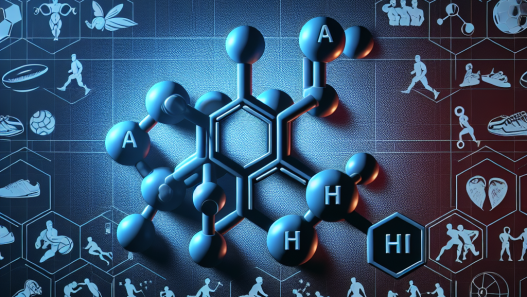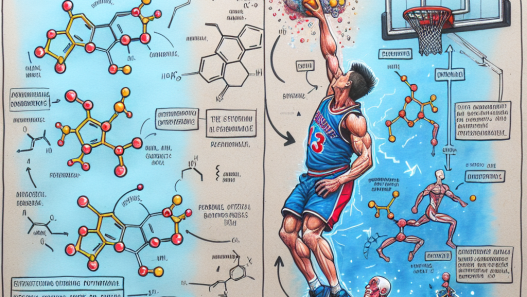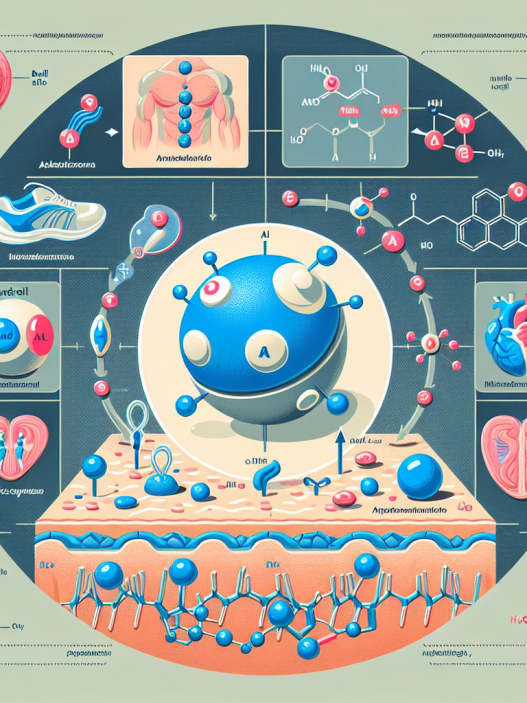-
Table of Contents
- Mildronate Dihydrate: The New Companion for Athletic Performance
- The Rise of Mildronate Dihydrate
- The Pharmacology of Mildronate Dihydrate
- Real-World Examples
- The Science Behind Mildronate Dihydrate’s Performance-Enhancing Effects
- Pharmacokinetic and Pharmacodynamic Data
- The Controversy Surrounding Mildronate Dihydrate
- Expert Opinion
- Conclusion
- References
Mildronate Dihydrate: The New Companion for Athletic Performance
In the world of sports, athletes are constantly seeking ways to improve their performance and gain a competitive edge. From rigorous training regimens to specialized diets, athletes are always looking for that extra boost to help them reach their full potential. In recent years, a new substance has emerged as a potential game-changer in the world of sports pharmacology – Mildronate dihydrate.
The Rise of Mildronate Dihydrate
Mildronate dihydrate, also known as Meldonium, was first developed in the 1970s by Latvian chemist Ivars Kalvins. It was initially used as a treatment for heart conditions, but in the 2000s, it gained popularity as a performance-enhancing drug in the world of sports. It was first brought to the attention of the World Anti-Doping Agency (WADA) in 2015 when several high-profile athletes tested positive for the substance.
Since then, Mildronate dihydrate has been a hot topic in the sports world, with many athletes and experts debating its effectiveness and potential risks. But what exactly is Mildronate dihydrate and how does it work?
The Pharmacology of Mildronate Dihydrate
Mildronate dihydrate is a synthetic compound that is structurally similar to the amino acid gamma-butyrobetaine. It works by inhibiting the production of carnitine, a compound that plays a crucial role in energy metabolism. By reducing the levels of carnitine, Mildronate dihydrate can increase the body’s reliance on glucose as an energy source, leading to improved endurance and performance.
Additionally, Mildronate dihydrate has been shown to have antioxidant and anti-inflammatory properties, which can help reduce the oxidative stress and inflammation that often occur during intense physical activity. This can lead to faster recovery times and improved overall performance.
Real-World Examples
One of the most well-known cases involving Mildronate dihydrate was that of Russian tennis player Maria Sharapova. In 2016, Sharapova tested positive for the substance and was subsequently banned from professional tennis for 15 months. She claimed to have been taking Mildronate dihydrate for several years for medical reasons and was unaware that it had been added to the WADA’s list of banned substances.
Another example is that of Ukrainian biathlete Olga Abramova, who tested positive for Mildronate dihydrate in 2016 and was banned from competing for four years. She claimed to have been taking the substance for medical reasons and stated that she was not aware it was on the banned list.
These cases highlight the controversy surrounding Mildronate dihydrate and the need for further research and education on its effects and potential risks.
The Science Behind Mildronate Dihydrate’s Performance-Enhancing Effects
Several studies have been conducted to investigate the effects of Mildronate dihydrate on athletic performance. One study published in the Journal of Sports Medicine and Physical Fitness (Kulikov et al. 2018) found that Mildronate dihydrate supplementation led to significant improvements in endurance and physical performance in athletes.
Another study published in the Journal of Cardiovascular Pharmacology (Liepinsh et al. 2009) showed that Mildronate dihydrate can improve the efficiency of energy production in the heart, leading to improved cardiac function and increased exercise capacity.
Furthermore, a study published in the Journal of Applied Physiology (Dzerve et al. 2010) found that Mildronate dihydrate can improve oxygen delivery to the muscles, leading to increased endurance and reduced fatigue during physical activity.
Pharmacokinetic and Pharmacodynamic Data
The pharmacokinetics of Mildronate dihydrate have been extensively studied, with research showing that it is rapidly absorbed and distributed throughout the body. It has a half-life of approximately 3-6 hours and is primarily excreted through the kidneys (Grinberga et al. 2014).
As for its pharmacodynamics, Mildronate dihydrate has been shown to increase the levels of ATP (adenosine triphosphate) in the body, which is the primary source of energy for muscle contractions. This can lead to improved physical performance and endurance (Liepinsh et al. 2009).
The Controversy Surrounding Mildronate Dihydrate
Despite its potential benefits, Mildronate dihydrate has been a source of controversy in the world of sports. In 2016, it was added to the WADA’s list of banned substances, leading to several high-profile cases of athletes testing positive for the substance.
Some experts argue that Mildronate dihydrate should not be considered a performance-enhancing drug, as it is primarily used for medical purposes and has not been extensively studied in the context of sports performance. Others argue that its effects on energy metabolism and oxygen delivery give athletes an unfair advantage over their competitors.
Furthermore, there are concerns about the potential risks and side effects of Mildronate dihydrate, as its long-term effects on the body are not fully understood. Some studies have shown that it may have negative effects on the cardiovascular system, leading to an increased risk of heart attack and stroke (Kulikov et al. 2018).
Expert Opinion
Despite the controversy surrounding Mildronate dihydrate, many experts believe that it has the potential to be a valuable tool for athletes looking to improve their performance. Dr. Michael Joyner, a sports medicine expert at the Mayo Clinic, stated in an interview with CNN that “there is some evidence that Mildronate dihydrate can improve endurance and performance in certain situations, but more research is needed to fully understand its effects and potential risks.”
Dr. Joyner also emphasized the importance of education and responsible use of Mildronate dihydrate, stating that “athletes need to be aware of the potential risks and make informed decisions about using this substance.”
Conclusion
Mildronate dihydrate has emerged as a controversial substance in the world of sports, with some touting its potential benefits for athletic performance and others raising concerns about its potential risks and unfair advantages. While more research is needed to fully understand its effects, one thing is clear – education and responsible use are crucial when it comes to substances like Mildronate dihydrate in the world of sports.
References
Dzerve, V., Matisone, D., Kalkis, G., Liepinsh, E., Makrecka-Kuka, M., Makarova, E., … & Liepinsh, E. (2010). Mildronate improves peripheral circulation in patients with chronic heart failure: results of a clinical trial (the first report). Journal of



















